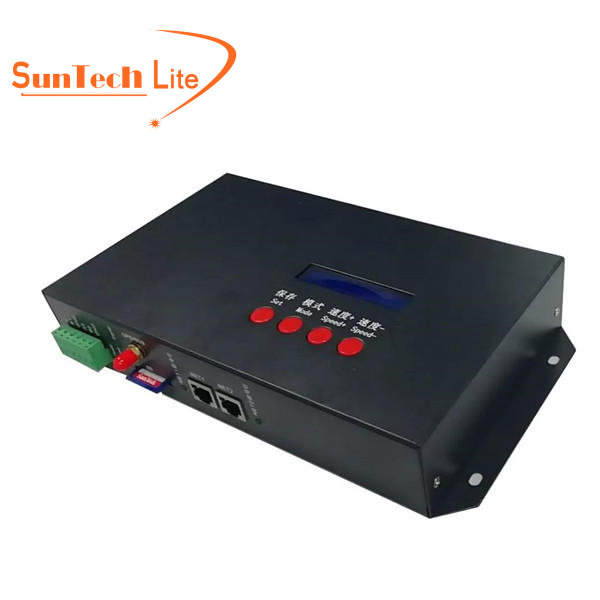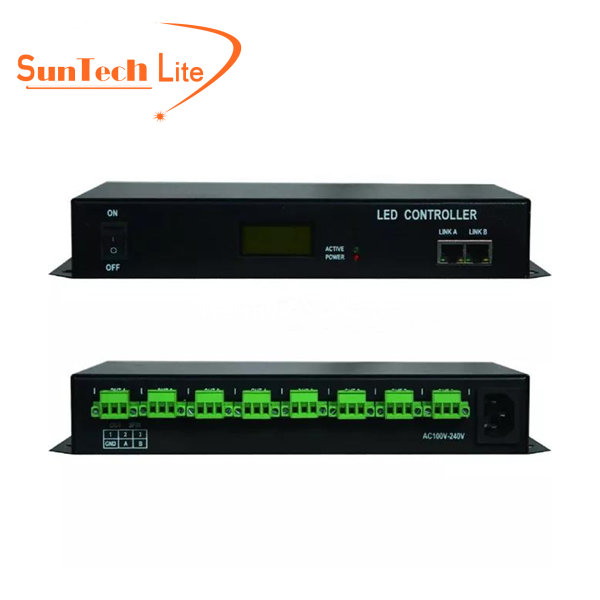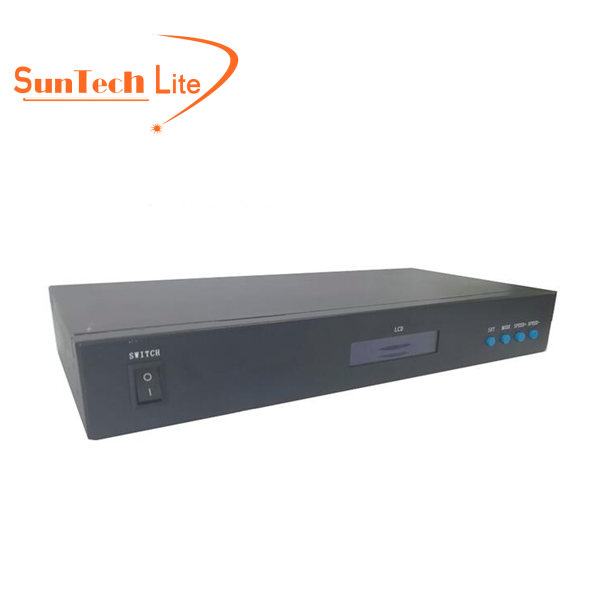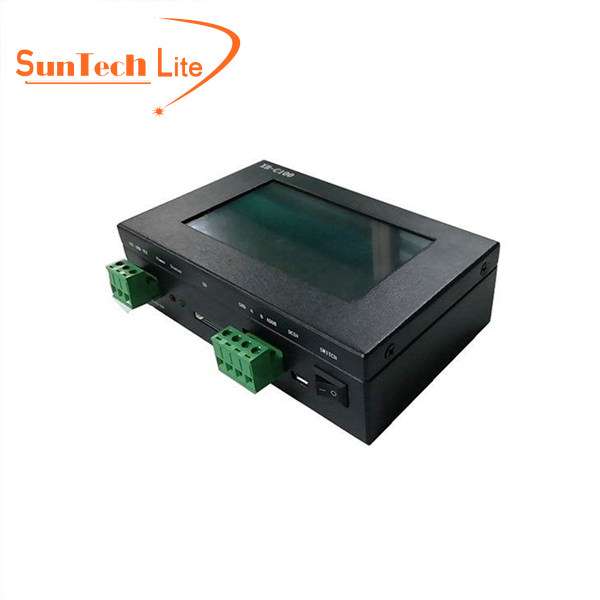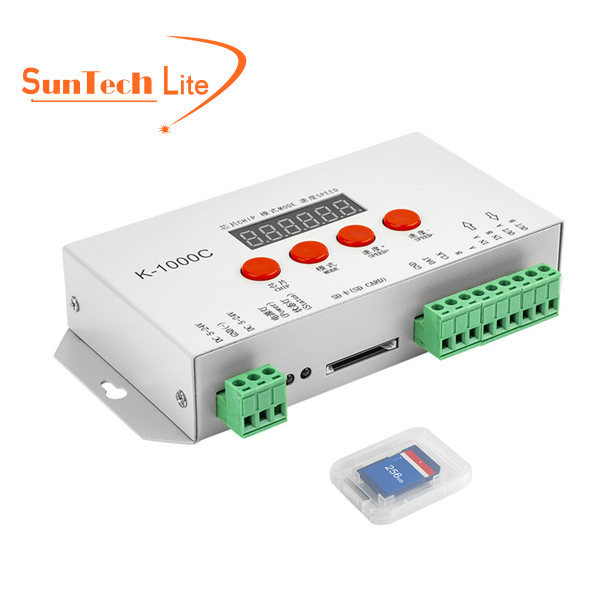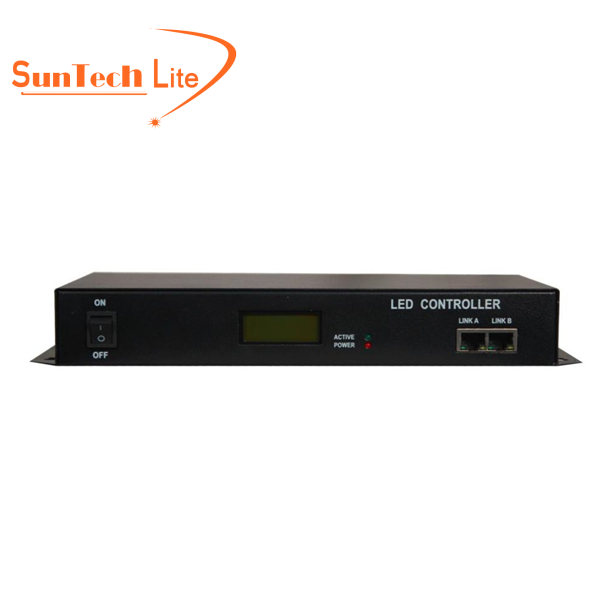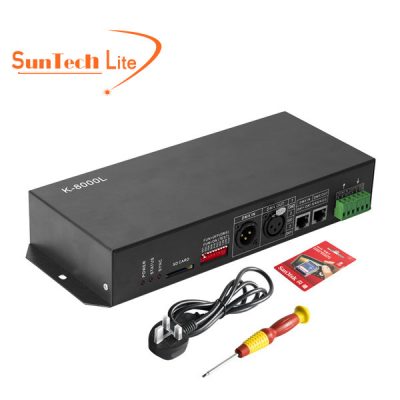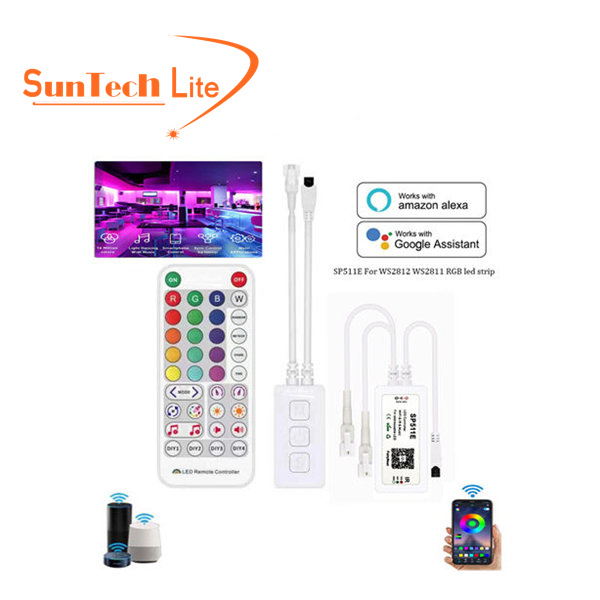What is a DMX LED Controller
A DMX LED controller is an electronic device that allows you to control the color, brightness, and effects of your LED lighting fixtures. DMX stands for Digital Multiplex, which is a protocol used to communicate with lighting fixtures and control their attributes.
A DMX LED controller typically has multiple channels that correspond to different attributes of the LED fixtures, such as color, intensity, and movement. These channels can be programmed to create complex lighting effects, such as color fades, strobing, and chases.
When selecting a DMX LED controller, it’s important to consider factors such as the number of channels, compatibility with your fixtures, ease of use, and programmability. With the right DMX address LED controller, you can take your lighting design to the next level and create stunning visual displays that will leave a lasting impression on your audience.
Types of DMX LED Controllers:
DMX LED Controller Applications
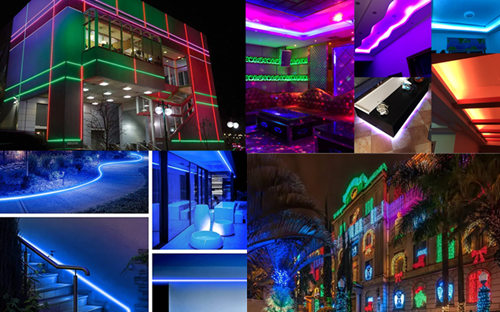
DMX LED controllers have a wide range of applications, including:
• Stage Lighting: DMX address LED controllers are commonly used in theatre, concerts, and other live performances to create dynamic lighting effects.
• Architectural Lighting: DMX systems can be used to control building facade lighting, landscape lighting, and other architectural elements.
• Entertainment and Events: DMX LED controllers are often used in nightclubs, bars, and special events to create an engaging and immersive atmosphere.
What Is A DMX LED Controller? How To Set Up?
Table of Contents
Introduction to DMX LED Controllers
DMX LED controllers are an essential component in the world of lighting control systems. They allow users to create dynamic and visually stunning lighting effects using LED fixtures. This article will explore DMX address LED controllers in depth, discussing their history, components, types, setup, programming, applications, and troubleshooting tips.
Understanding DMX Protocol
Before diving into DMX LED controllers, it’s necessary to understand the DMX protocol, which is the foundation of these systems.
- History of DMX
DMX (Digital Multiplex) is a communication protocol that was developed in the late 1980s by the entertainment industry to control lighting equipment. It quickly gained popularity due to its simplicity, robustness, and flexibility.
- DMX512 Standard
DMX512 is the most widely used DMX standard, providing a reliable and efficient means of controlling up to 512 channels of lighting equipment per universe.
Components of a DMX LED Control System
A DMX LED control system typically consists of three main components:
DMX Controller: The central device that sends DMX signals to control LED fixtures.
DMX Decoder: A device that converts DMX signals into control signals for LED fixtures.
LED lighting fixtures: Lighting devices that can be controlled by DMX signals.
How DMX LED Controllers Work
DMX Protocol
The DMX protocol is a communication standard used in the entertainment industry to control lighting and other devices. It consists of a series of digital messages sent via DMX cables to the fixtures, telling them what to do. Each message contains information about the fixture’s behavior, such as color, intensity, and effects.
DMX Channels
DMX channels are the individual control points within the DMX protocol. Each channel controls a specific attribute of the fixture, such as red, green, blue, or dimming. The number of channels a fixture has determines the number of attributes it can control.
DMX Controllers
DMX controllers are the devices that send DMX signals to the fixtures. They come in various forms, including standalone controllers, PC-based controllers, and wireless controllers. They allow you to program and control the behavior of your fixtures, creating intricate lighting effects.
Setting Up a DMX LED Control System
- Connecting the DMX Controller
To set up a DMX LED control system, first connect the DMX controller to the DMX decoder using a DMX cable. The DMX decoder is then connected to the LED fixtures using appropriate cables.
- Addressing LED Fixtures
Each LED fixture must be assigned a unique DMX address within the DMX universe. This address determines the starting channel of the fixture, allowing it to receive control signals from the DMX controller.
Programming DMX LED Controllers
- Creating Scenes and Chases
Programming a DMX LED controller involves creating scenes and chases. A scene is a static look, while a chase is a sequence of scenes that can be played back with various speeds and patterns.
- Using DMX Software
DMX software offers a more user-friendly approach to programming DMX LED controllers. Users can create scenes and chases visually, often with the help of a 3D visualizer to preview the lighting effects.
Choosing the Right DMX LED Controller
Selecting the right DMX LED controller depends on factors such as budget, complexity of the lighting design, and user preference. Some considerations and features to look for include:
- Number of DMX channels
- Ease of use and programming
- Compatibility with LED fixtures
- Hardware or software-based control
Conclusion
DMX LED controllers allow users to create visually captivating lighting effects by harnessing the power of the DMX protocol. By understanding the components, types, setup, and programming of DMX LED control systems, users can create dynamic lighting designs for various applications, such as stage lighting, architectural lighting, and entertainment events. Additionally, choosing the right DMX LED controller and troubleshooting any issues that arise can lead to a more seamless and enjoyable lighting control experience.
FAQs
What is the maximum number of LED fixtures that can be controlled by a DMX address LED controller?
The number of fixtures that can be controlled depends on the number of channels per fixture and the DMX universe‘s capacity (512 channels). For example, if each fixture requires 10 channels, a single DMX universe could control up to 51 fixtures.
Can I use DMX LED controllers with non-LED lighting fixtures?
Yes, DMX controllers can be used with a wide range of lighting fixtures, including conventional incandescent lights, moving lights, and other devices, as long as they are DMX compatible.
Do I need any special cables for connecting DMX address LED controllers to LED fixtures?
A DMX control system requires DMX cables, which are specifically designed to transmit DMX signals. These cables typically have a characteristic impedance of 120 ohms and use XLR connectors with 3, 5, or sometimes 7 pins.
Can I control DMX LED fixtures wirelessly?
Yes, wireless DMX systems are available, which use radio frequency (RF) signals or Wi-Fi to transmit DMX data between the controller and the fixtures. This can be useful for situations where running cables is impractical or undesirable.
Can I control multiple DMX systems with a single DMX address LED controller?
Yes, it is possible to control multiple DMX systems or universes with a single controller. This typically requires the use of specialized hardware or software that can transmit DMX signals to separate universes simultaneously.

